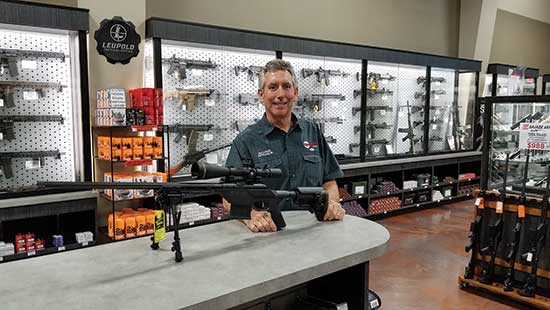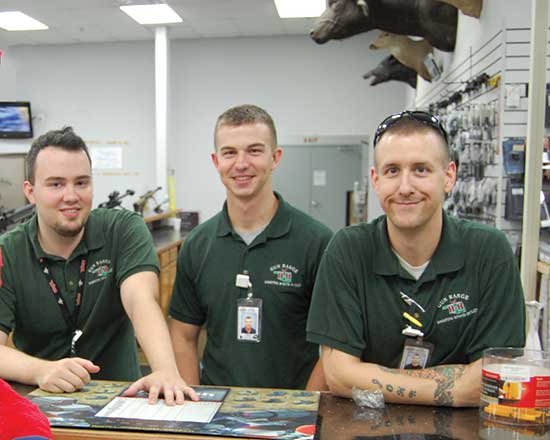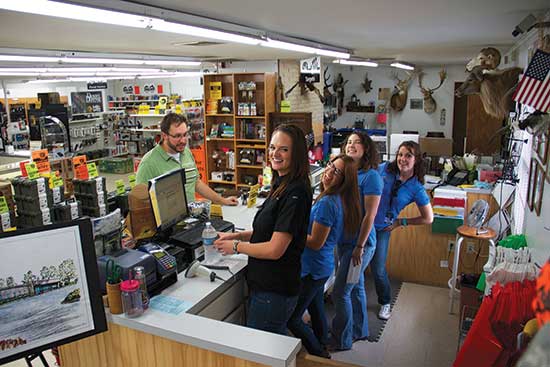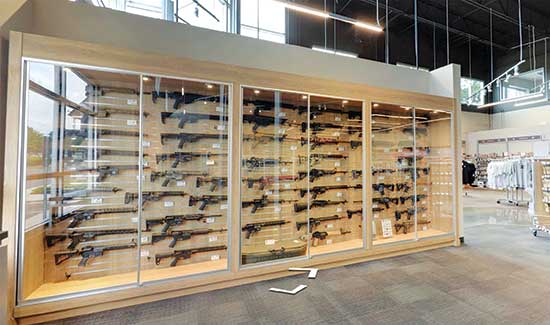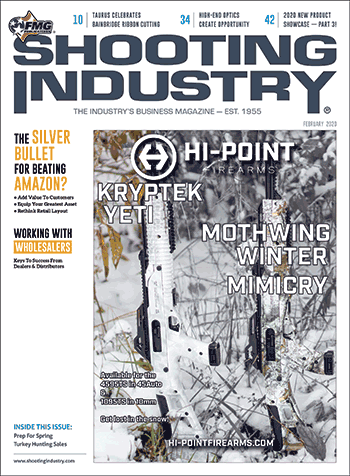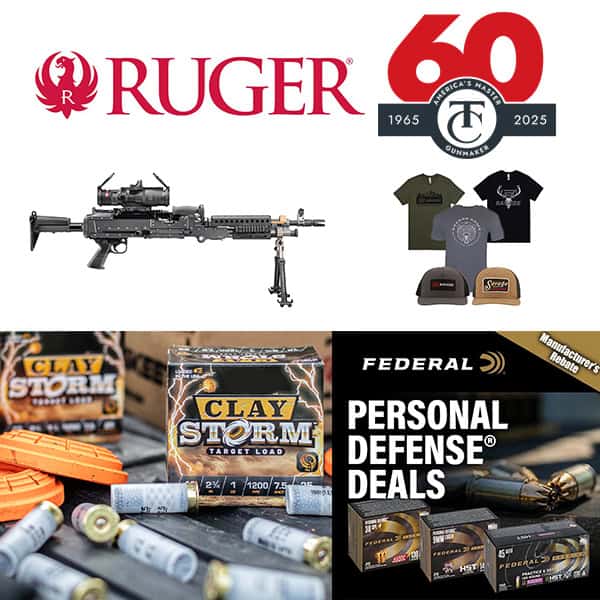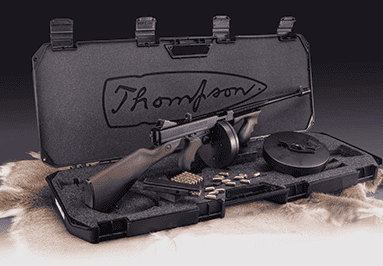THE SILVER BULLET
Tips For Beating Online Sales
Competing with the likes of Amazon and other online retailers, your store has to “get it right” while meeting the immediate needs of customers today.
The first question you may want to ask yourself, though, is your goal to compete with Amazon or operate a successful business? Hopefully your aim is to operate a successful business, as focusing on Amazon takes your eyes off where they need to be — your business.
For those who joined the industry during the Obama years, you may be surprised to learn this isn’t the first time the firearms retail segment of the industry has struggled. Looking into the not-so-distant past, Walmart, category-killer box stores and basement bandits were the enemy. Firearms retailers have survived to thrive before — and can do so again.
In fact many are thriving right now, in the very environment we often lament about. Here, we’ve uncovered some silver bullets that — when paired with an extreme amount of hard work and some capital — will give your store an edge.
Challenges Of Today
Let’s look at some of the challenges all brick-and-mortar retailers are currently facing: higher operating costs, hyper margin compression (a fancy way of saying making less money or even losing money selling some items), online retailers selling products for less than a storefront dealer paid for them, manufacturers selling consumer-direct and Facebook cutting out the storeowner’s ability to promote firearms. Any of this sound familiar?
Today, your customer can essentially find any product you sell cheaper online if they do any searching at all. So why does anyone buy from your physical store? The answer is the value your business adds to the equation! Your business has to offer a value equal to or greater than what the customer can purchase it for elsewhere. It’s a hard truth. If you’re not adding value, the customer will leave for an online retailer or another brick-and-mortar able to provide them with value.
For instance, if you’re stocking Honor Defense pistols and another business (be it online, a guy with an FFL in his basement or at a local gun show) has them for $30 less, it becomes your job to show why your business is worth $30 to the customer. If not, they’ll just go where it’s easiest or cheapest. More than ever, the customer is “king” and, boy, does the king have a lot of options on where to spend hard-earned cash.
You’re better off hiring friendly, outgoing sales staff—regardless of
what industry they came from—than “bullet heads” who don’t have people skills.
Adding Value
Your value can be found in a convenient location. But you can’t feasibly build additional stores to be convenient for other population centers, and what happens when another store is built closer to your customer base?
So, think of some ways you can add value. Have you considered offering a 30-day satisfaction guarantee on every firearm you sell? Sound crazy? Good. It needs to be big and bold to draw attention in today’s crowded market.
From the customer’s perspective, a program like this provides real value by removing the risk of buyer’s remorse. If he or she doesn’t like it even after taking it to the range, they’re going to get a full refund (or store credit). Even a $300 gun is a major purchase for many folks and if you’re taking the risk out of the equation, is that an added value? You bet it is! And it works.
Ed and Peggy Santos own Center Target Sports in Post Falls, Idaho, and they were among the first retailers using the 30-day satisfaction guarantee. Center Target has 3,500 square feet of retail with a 15-lane range. Besides online competitors, Ed had a local dealer consistently selling GLOCKs below MAP in order to get customers in the door to buy clothing and camping gear. Ed fought back with what he calls the “No Regrets” policy.
If a customer buys an in-stock firearm and they’re unhappy with it within 30 days, they can bring it back and a team member will happily turn the full amount into a store credit. If the customer does bring the gun back, it’s resold as gently used — usually for the same as (or a little less than) what Ed purchased it for. Ideally, instead of buying another gun, the customer takes a class or buys another higher-margin item. If they choose to put the store credit toward another gun, however, you still come out okay.
In the first year with the program, they took back five guns — which represented only a nominal percentage of gun sales. (Those five guns sold within two weeks from the date of their return, between $30–45 below the original price.) The program generated an extra $20 or so on every gun sold. In this case, a 30-day satisfaction guarantee adds value to both the customer and the bottom line.
For more particulars on this program, visit www.centertargetsports.com/retail-range
Found A Winning Program? Promote It
If you add a program like Center Target’s “No Regrets” policy, be sure to make it a large part of your advertising efforts. Consider signage in the store announcing the program, and give out a certificate with each purchase to explain it.
Marketing is more important than ever in the current climate. Your customers will think it’s a big deal if you make it out to be a big deal. The reverse is also true: If you implement something like this but don’t advertise it, you won’t get the results. Promote your brand, your story about adding value — just advertising cheap prices doesn’t cut it.
A “No Regrets” program will project your business as the caring store, one looking out for its customers. Some customers are generally afraid to buy a gun — what if they don’t like it, or the recoil is too much — and your store has provided a solution to take care of them (read: provide value). Now they don’t have to worry about buying a gun online or from the megamart down the road and wonder if they’ll like it after they shoot it.
Enhance The Buying Experience
A large part of adding value to the customer’s purchase is providing an enjoyable buying experience for them. When’s the last time you updated your layout and/or changed your fixtures? Before you say I don’t make enough money to buy new fixtures, consider it’s a cruel world — the customer doesn’t care about your problems, he has many options. If you don’t upgrade customers will go elsewhere, where it’s fun to shop.
Changing up your store doesn’t have to be expensive. With brick-and-mortar retail in all industries closing, there are plenty of used fixtures available. And don’t be afraid to look outside our industry. Back when I owned a store, I purchased a used Montblanc-branded large standalone ink pen display that was lighted and rotated for a $100. With some granite paint and graphics it became my centerpiece knife display.
Want to go bold? Ditch the traditional retail counters and follow the rest of the retail world into shoulder-to-shoulder selling. One of the first to go this way was Taylor Hayden, owner of Blackstone Shooting Sports in Charlotte, N.C. Long guns are placed along the walls, allowing customers to walk right up to them — separated by sliding glass. Large tags enable them to self-shop. Handguns are in cases equipped with pullout drawers for sales staff to set guns on and have a discussion.
These displays keep the firearms in the prime selling space of belt buckle to eyeballs. An important consideration: if you look at your current displays I’ll bet the guns on the bottom shelves have the lowest sell through, as it’s not convenient for customers to shop them.
Another Benefit Of Shoulder-To-Shoulder Selling
Richard Sprague, owner of Sprague’s Sports in Yuma, Ariz., added 2,500 square feet of shoulder-to-shoulder displays to his existing traditional gun counter-style store of 4,780 square feet. This adjustment has resulted in more accessory sales (read: high margin), since employees are now side by side with the customer nearer to the accessories. Now, they don’t have to come out from behind the counter to sell them since they’re already with the customer.
In more traditional layouts, you could run into the challenge of a negligent employee behind the counter who spends a considerable amount of time selling a $300 retail gun — generating $30, probably more than it cost to sell it — and once this part of the sale closed, stops selling. Not only is this extremely harmful to the health of your business, an employee not offering customers cleaning equipment or range add-ons doesn’t offer any extra value. Recommending correct-fitting accessories, offering a class based on their skill level, etc., does.
To avoid this pitfall, make it easier for your employees to sell accessories by displaying them near firearms. At Sprague’s, discussion counters are by the handgun displays — giving sales staff another place to demo firearms and discuss the sale.
These discussion counters can be repurposed as product displays that go with nearby guns. For example, near your GLOCKs would be grip extensions, magazines, night sights, etc. This will enable staff to show the accessories instead of pointing to a general direction as they lean behind the gun counter.
Once a consumer decides to buy the main item, the clock is ticking for accessory sales. The longer your salesperson is away chasing down a box, it lessens the odds of selling accessories to the customer. Use the lower half of the displays for storage.
Your Greatest Asset
Simply, staff value is probably the biggest value-add you offer.
Employees are like the tires on an Indianapolis 500 racecar. A ton of money was spent on the car (not unlike your retail operation) to maximize its performance — such as a special engine, shocks, wind tunnel testing, top-notch driver — but only the tires touch the track. If we replace the racing slicks with whitewalls it won’t ever win.
Your operation is the same, it can have fancy showroom displays (racecar), great ownership (driver), but if the sales staff (tires) who engage with the end users (track) aren’t “up to speed,” all the time and money you spent on your facility won’t win. The employee on the floor every day is what the customer thinks is your business. How much time and effort did you spend on training your sales staff last year?
Many of you may be thinking I can’t afford to train my staff, as turnover is too high. Hank Yacek, CEO of Point of Impact Consulting, has a great answer: “What if you don’t train them, and they stay?” Let that sink in. There are many training programs around that teach selling skills, some are tailored specifically to the uniqueness of our industry.
A big part of having a successful selling staff is starting with one that’s trainable. Especially in our industry, you’re better off hiring friendly, outgoing sales staff —regardless of what industry they came from — than “bullet heads” who don’t have people skills. It’s much easier to teach someone about firearms, rather than trying to teach them to be nice.
Is your staff all stale, pale and male? Next time you need a new team member, maybe look outside your current staff makeup.
What will you do to add more value for customers? At the start of a new decade, it’s the perfect time to take action.

